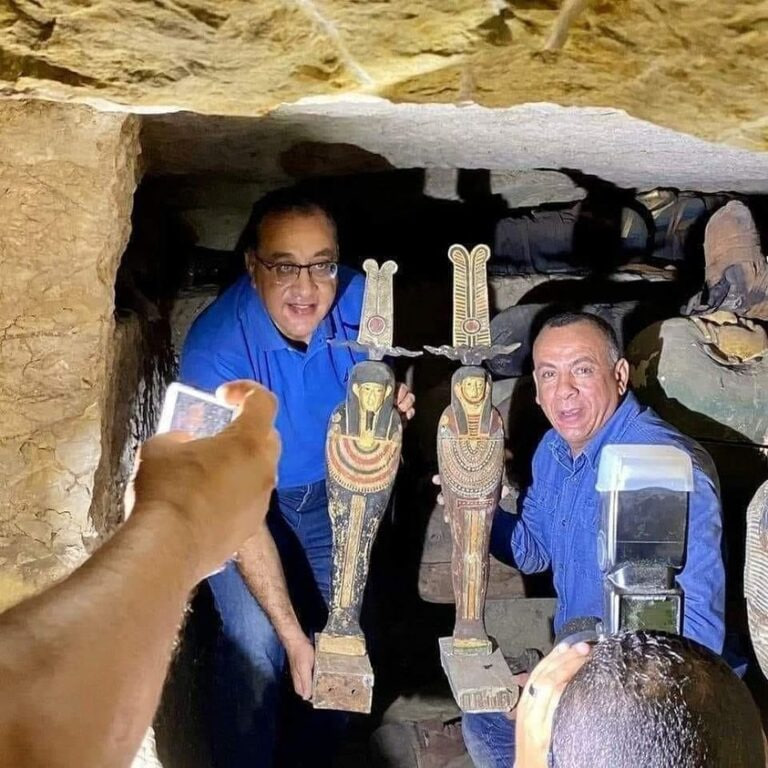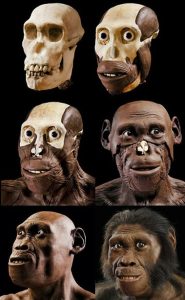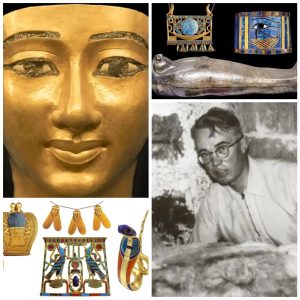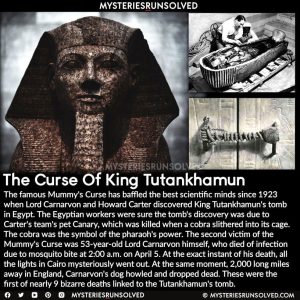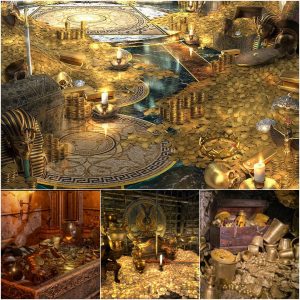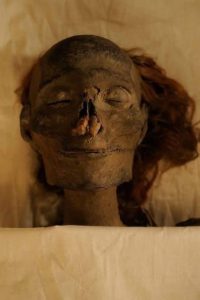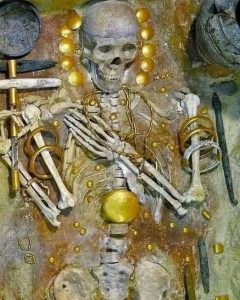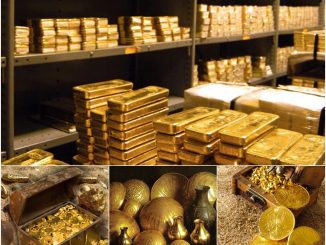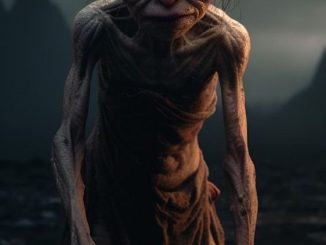Egypt has unearthed another trove of ancient coffins in the vast Saqqara necropolis south of Cairo, announcing the discovery of more than 80 sarcophagi.
The Tourism and Antiquities Ministry said in a statement that archaeologists had found the collection of colourful, sealed caskets which were buried more than 2,500 years ago.
Prime Minister Mustafa Madbouly and Tourism and Antiquities Minister Khalid el-Anany toured the area and inspected the new discovery yesterday.
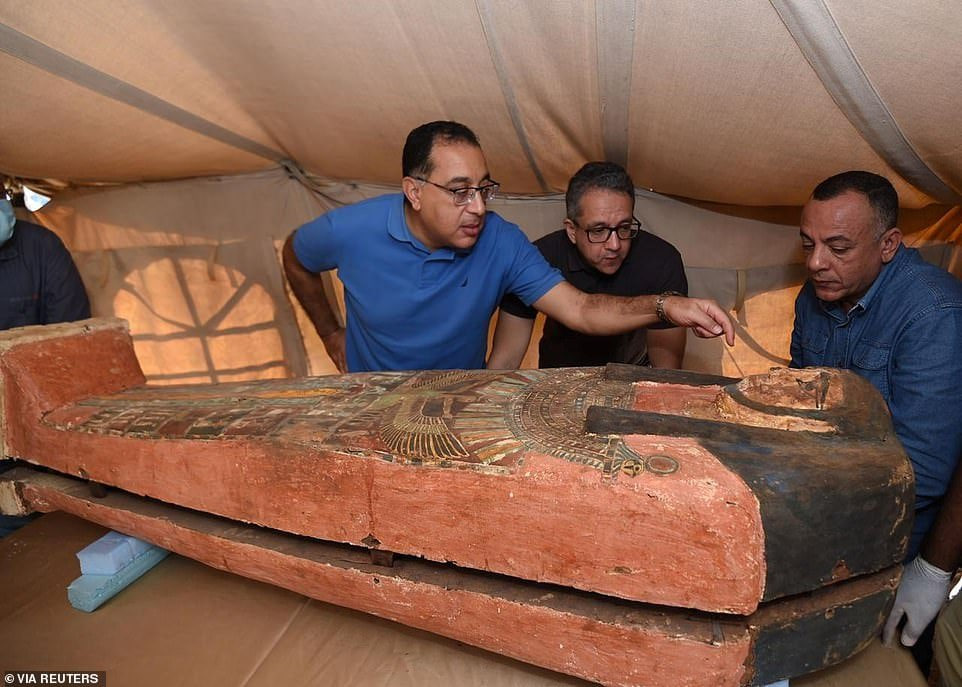
Egypt has unearthed another trove of ancient coffins in the vast Saqqara necropolis south of Cairo, announcing the discovery of more than 80 sarcophagi. Egyptian Prime Minister Mustafa Madbouly toured the area and viewed the finds earlier this week (pictured).
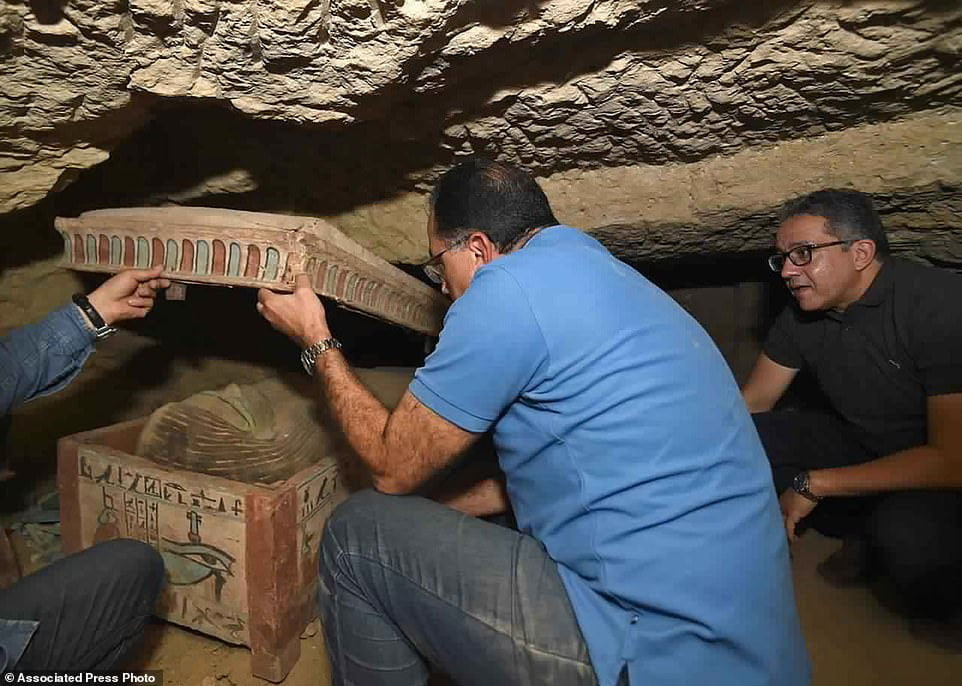
Egypt has sought to publicise its archaeological finds in an effort to revive its key tourism sector, which was badly hit by the turmoil that followed the 2011 uprising. Pictured, the Egyptian Prime Minister looking inside one of the coffins
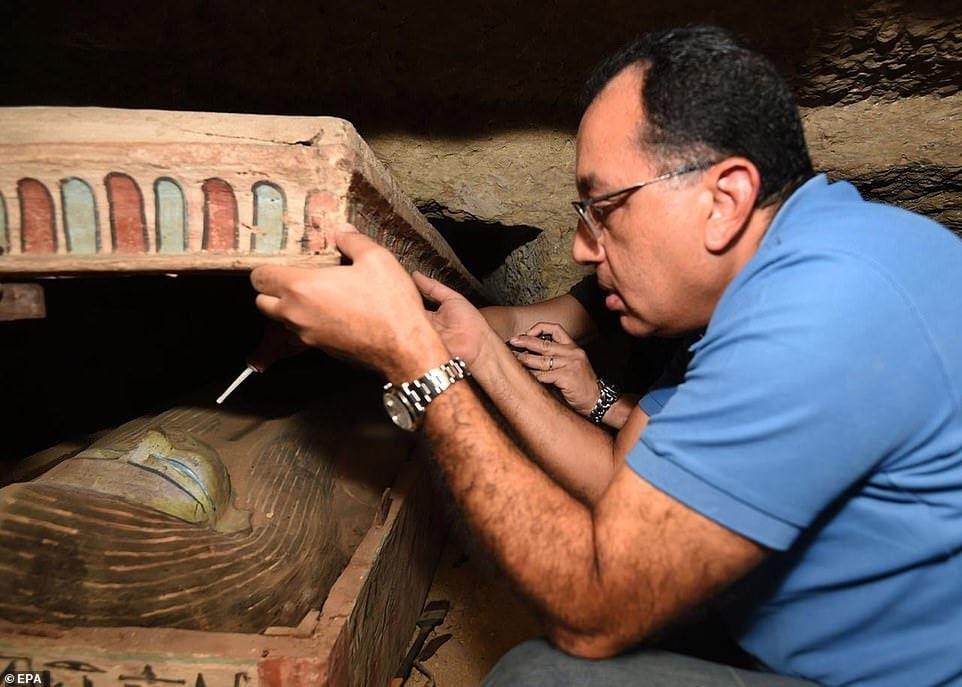
This photo from the Egyptian Ministry of Tourism and Antiquities shows Egyptian Prime Minister Mustafa Madbouly looking inside at one of the coffins discovered at an ancient burial shaft at a necropolis in Saqqara
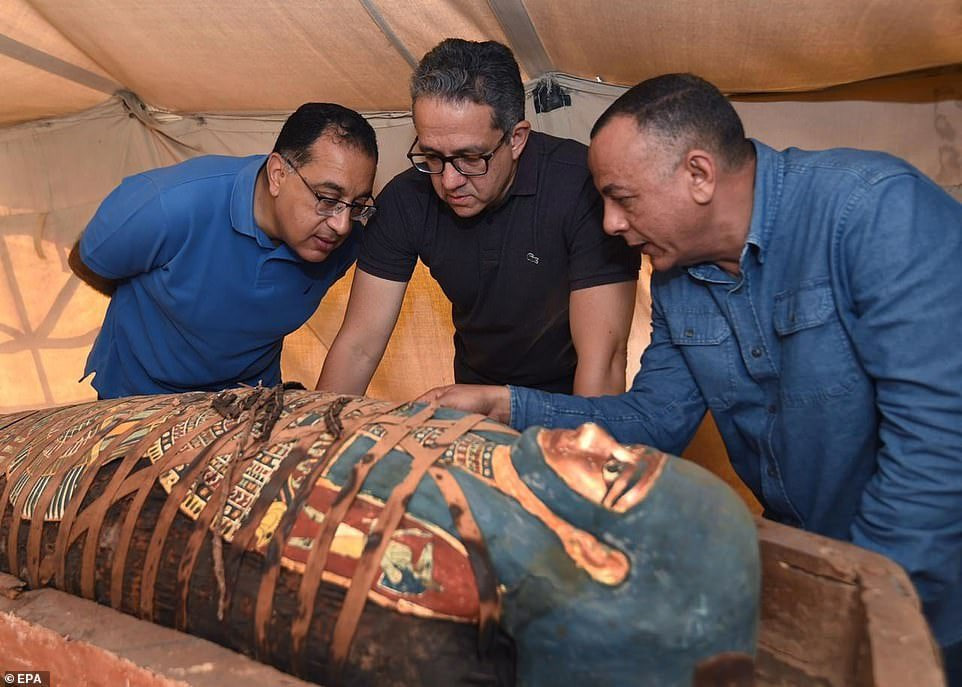
Pictured, Egyptian Prime Minister Mustafa Madbouly (L), Egyptian Minister of Antiquities Khaled el-Anany (C) and secretary-general of the Supreme Council of Antiquities Mostafa Waziri (R) looking at a sarcophagus
Archaeologists also found colourful, gilded wooden statues, the ministry said.
Details of the new discovery will be announced soon in a news conference at the famed Step Pyramid of Djoser, it said.
Egypt has sought to publicise its archaeological finds in an effort to revive its key tourism sector, which was badly hit by the turmoil that followed the 2011 uprising.
The sector was also dealt a further blow this year by the coronavirus pandemic.
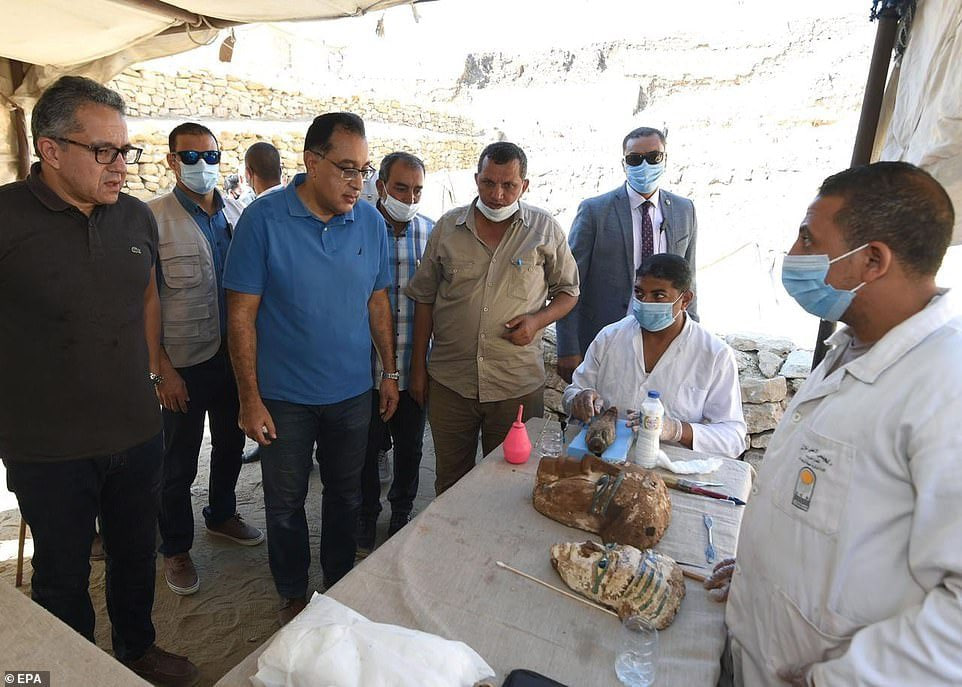
As well as more than 80 coffins and mummies, there were various artefacts discovered inside the burial chamber presenred here before the Prime Minister
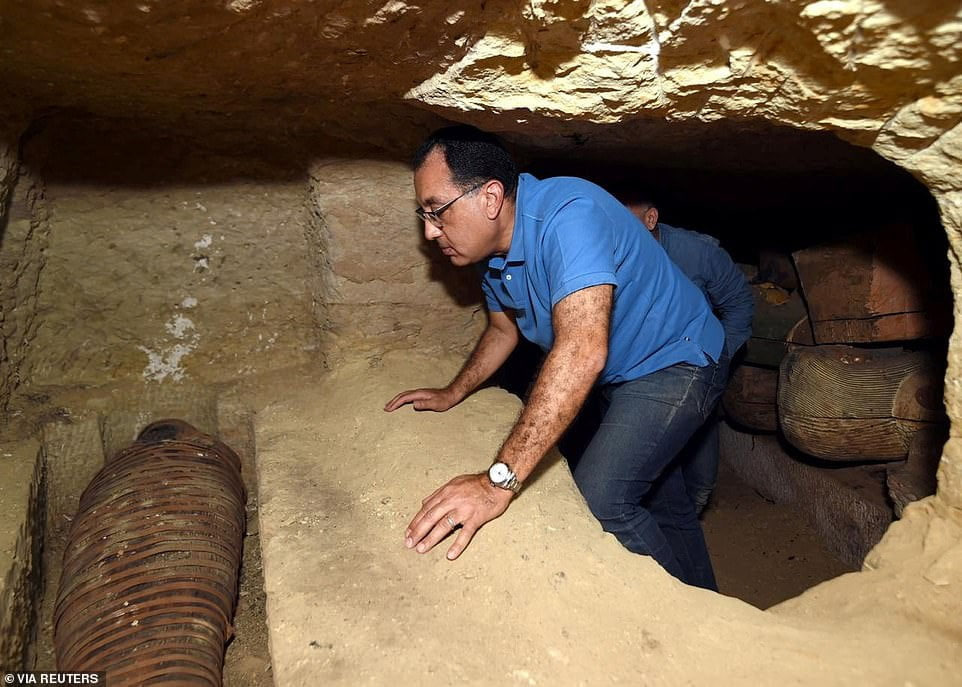
The Tourism and Antiquities Ministry said in a statement that archaeologists had found the collection of colourful, sealed caskets which were buried more than 2,500 years ago
Located 19 miles south of Cairo, the vast burial complex of Saqqara — which features the step pyramid of Djoser and flat-roofed tombs — served the ancient Egyptian capital of Memphis
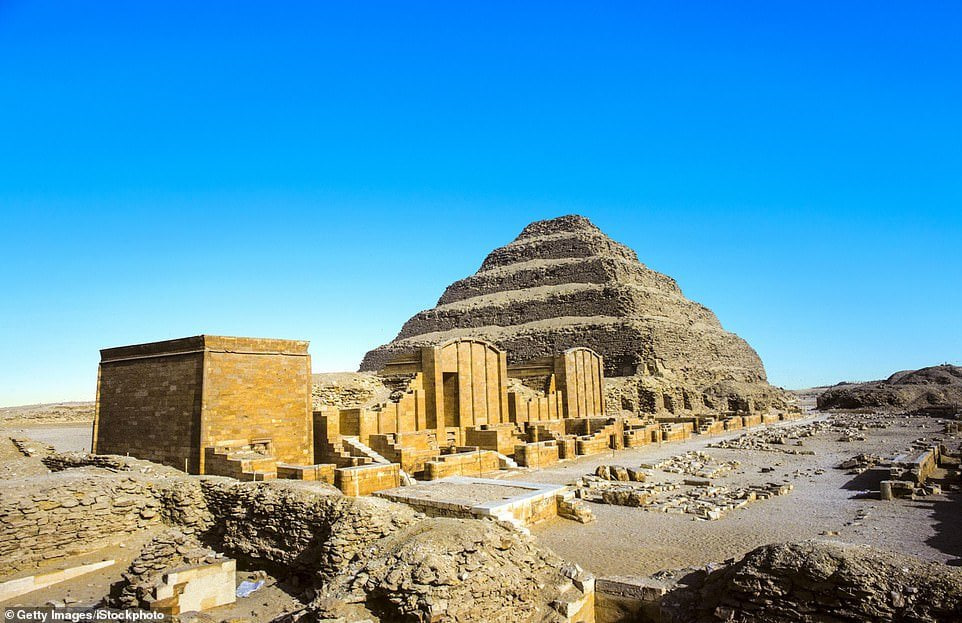
More details of the new discovery will be announced soon in a news conference at the famed Step Pyramid of Djoser, Egyptian authorities say 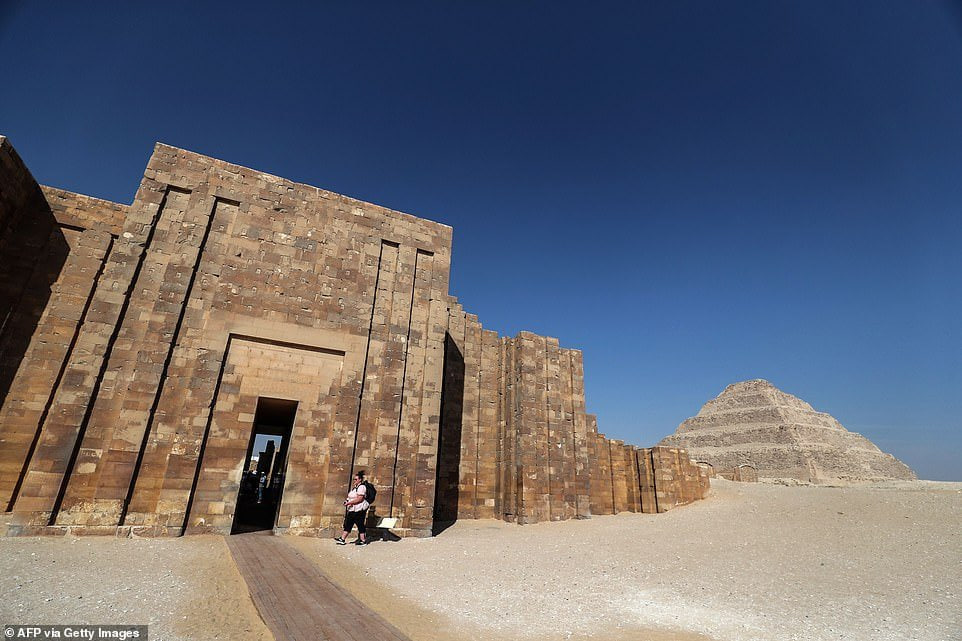
The dramatic find was unearthed south of Cairo in the sprawling burial ground of Saqqarah, the necropolis of the ancient Egyptian capital of Memphis, a UNESCO World Heritage site
Just over two weeks ago Egypt revealed 59 sealed sarcophagi, with mummies inside most of them, in the same area of Saqqara.
The Saqqara site is located south of Cairo and the vast burial complex, which also features the step pyramid of Djoser, served the ancient capital of Memphis.
It also includes the famed Giza Pyramids, as well as smaller pyramids at Abu Sir, Dahshur and Abu Ruwaysh.
The ruins of Memphis were designated a UNESCO World Heritage site in 1970s.
The plateau hosts at least 11 pyramids, including the Step Pyramid, along with hundreds of tombs of ancient officials and other sites that range from the 1st Dynasty (2920-2770 B.C.) to the Coptic period (395-642).
Earlier this month, one of dozens of ornately decorated sarcophagi was opened for the first time before assembled media.
The team slowly revealed mummified remains wrapped in burial cloth that bore hieroglyphic inscriptions in bright colours.
The majority of coffins housed mummified remains which initial research suggests would have been priests, top officials and elites in ancient Egyptian society.
All of whom would have likely been subject to ancient Egypt’s complex burial rituals after they died, including having their brains removed with an iron hook.
Egypt’s Minister of Antiquities and Tourism, Dr. Khaled El-Enany, said at the time: ‘I can say most of the discoveries have been made by Egyptian teams on Egyptian soil. This is something I am immensely proud of.’
He said the mission had started re-excavating the site two months ago, and uncovered a burial shaft 36 feet deep. Inside, they found 13 intact coffins.
The team continued their excavations, discovering two more shafts – 32 and 39 feet deep – also filled with coffins.
All the coffins discovered so far are in good condition and bear their original colours.
‘My colleagues in the Supreme Council of Antiquities discovered burial shafts filled with wooden, sealed and intact coffins,’ El-Enany said.
‘I am really impressed that Covid-19 did not stop them from digging to unveil more mystery and secrets about our great civilisation.’
The minister said that the coffins would be transported to the Grand Egyptian Museum to be displayed to the public.
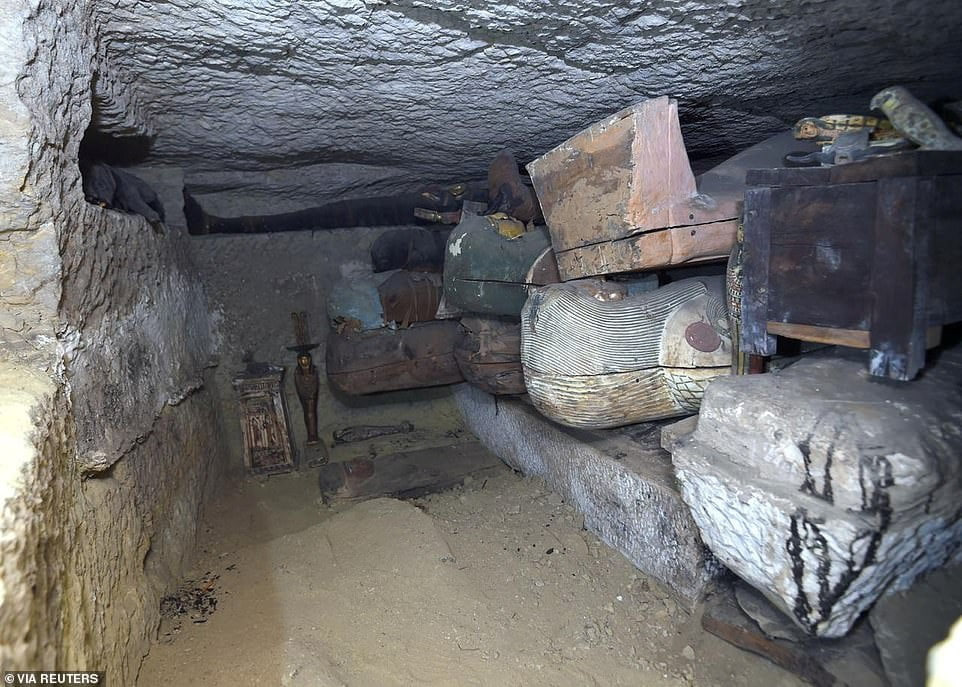
Just over two weeks ago Egypt revealed 59 sealed sarcophagi , with mummies inside most of them, in the same area of Saqqara. This find adds to the enormous trove of historical finds in the African nation

Archaeologists also found colourful, gilded wooden statues, officials said. Details of the new discovery will be announced soon in a news conference at the famed Step Pyramid of Djoser

Pictured: A man opens one of the sarcophagi during the unveiling event in front of the media earlier this month. 59 anthropoid painted coffins have been discovered so far

The majority of the coffins found at Saqqara so far have contained mummified remains (pictured) of priests, top officials and elites

A sarcophagus that is around 2500 years old is seen inside the newly discovered burial site near Egypt’s Saqqara necropolis, in Giza, Egypt, October 3
